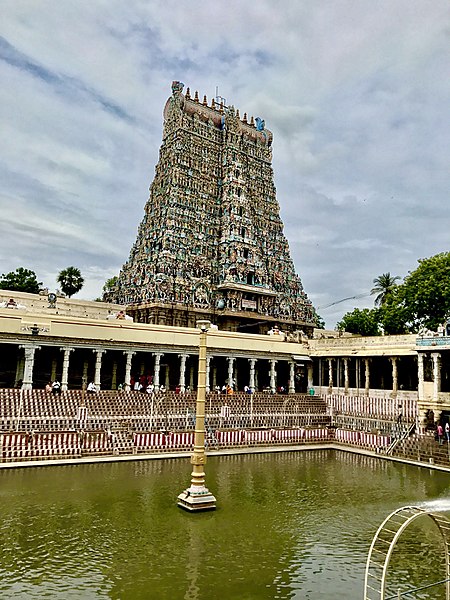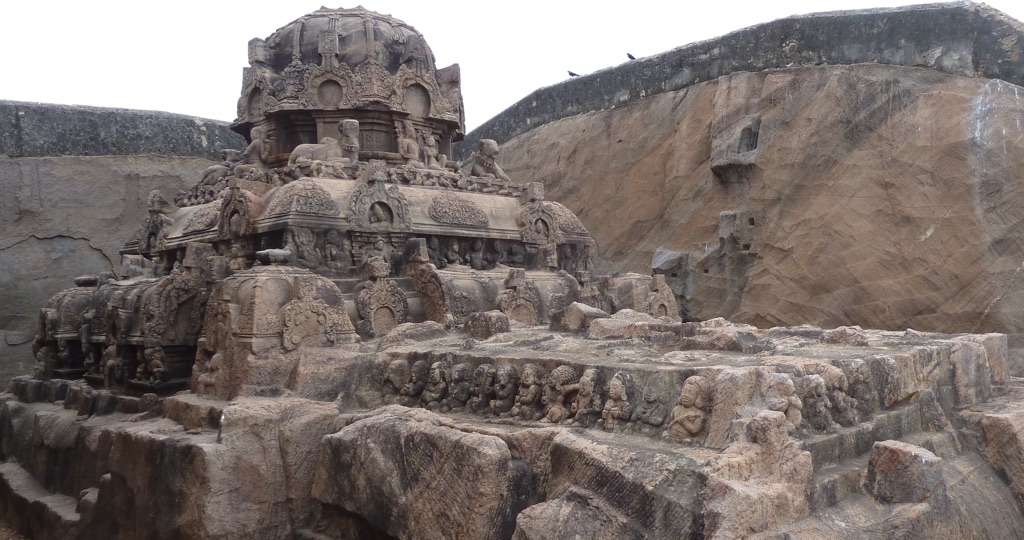The Vettuvan Koil rock cut temple is a remarkable example of Pandyan rock-cut architecture located in Kalugumalai, a panchayat town in Thoothukudi district in the South Indian state of Tamil Nadu. Carved out of a single rock, this unfinished temple stands as a testament to the exquisite craftsmanship of the ancient Pandyas. It is a…
Pandya dynasty
The Pandya Dynasty, one of the oldest Tamil dynasties, has a rich and complex history that spans several centuries, from as early as the 6th century BC to the 17th century AD. Originating from the fertile and prosperous region of the present-day southern part of Tamil Nadu, India, the Pandyas are celebrated for their contributions to Tamil literature, culture, and architecture. Their emblem, the fish, is widely recognized and symbolizes their maritime prowess and economic power, primarily through trade with the Roman Empire and Southeast Asia.
In the early stages, around the 3rd century BC, the Pandya kingdom was mentioned by Megasthenes, the Greek ambassador to India, and later, their existence was recorded in the Mauryan period. The Sangam literature, dating from the 3rd century BC to the 3rd century AD, provides a vivid picture of the Pandya rulers’ patronage of Tamil poets and the flourishing of Tamil culture and literature under their rule. This period is often regarded as a golden age in the history of Tamil literature and culture.
The Pandyas were devout followers of Hinduism, and their devotion is evident in the magnificent temples they built, such as the Meenakshi Amman Temple in Madurai, dedicated to Goddess Parvati. The architectural grandeur of these temples reflects the dynasty’s prosperity and their patronage of the arts. The religion deeply influenced the social and daily life of the people, with festivals and rituals playing a central role in the community.
The social structure during the Pandya reign was complex, with a well-defined hierarchy. The king was at the top, followed by priests, warriors, merchants, and farmers. The caste system was prevalent, and social mobility was limited. Daily life for the common people revolved around agriculture, fishing, and trade. The Pandyas were known for their irrigation techniques and water management systems, which supported agriculture and contributed to the region’s prosperity.
Several notable rulers marked the dynasty’s long history, including Maravarman Sundara Pandyan and Jatavarman Sundara Pandyan, who are celebrated for their military conquests and administrative reforms. Under their rule, the Pandya kingdom expanded significantly, encompassing large parts of Tamil Nadu and extending its influence over Sri Lanka and the Maldives.
The Pandyas were involved in numerous wars and battles, most notably with their arch-rivals, the Cholas and the Cheras, as well as with the Sinhalese kings of Sri Lanka. The struggle for supremacy over the Tamil country and the lucrative trade routes with the Roman Empire often led to these conflicts. The Chola-Pandya rivalry, in particular, shaped much of the region’s history, with the Pandyas experiencing both triumphs and defeats.
The decline of the Pandya Dynasty began in the 13th century AD, following repeated invasions by the Delhi Sultanate. Despite attempts to revive their fortunes, the dynasty gradually lost its territories and influence. By the 17th century AD, the once-great dynasty had faded into obscurity, leaving behind a rich cultural and architectural legacy that continues to be celebrated today.
The Pandya Dynasty’s history is a testament to the enduring spirit of the Tamil people, their contributions to Indian culture, and their influence on the broader South Asian region. Their legacy, encapsulated in the grand temples, rich literature, and vibrant traditions, continues to be a source of pride and inspiration.

Meenakshi Amman Temple
The Meenakshi Amman Temple is not just a place of worship; it is a grand symbol of Indian architecture and spirituality, captivating visitors with its intricate carvings and towering gopurams (gateway towers). Nestled in the heart of Madurai, Tamil Nadu, this historic Hindu temple is dedicated to Goddess Meenakshi, a form of Parvati, and her consort, Lord Sundareshwar, a form of Shiva. The temple’s sprawling complex is a labyrinth of sacred halls, shrines, and water bodies, showcasing a rich tapestry of myths and legends. Each stone and sculpture tells a story, creating a profound narrative that is woven into the very fabric of Indian culture.

